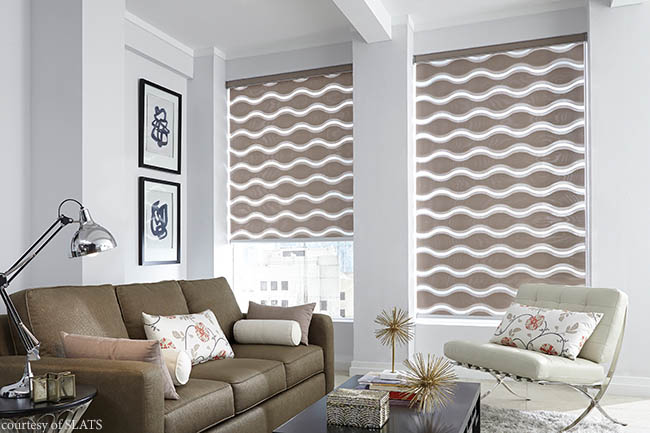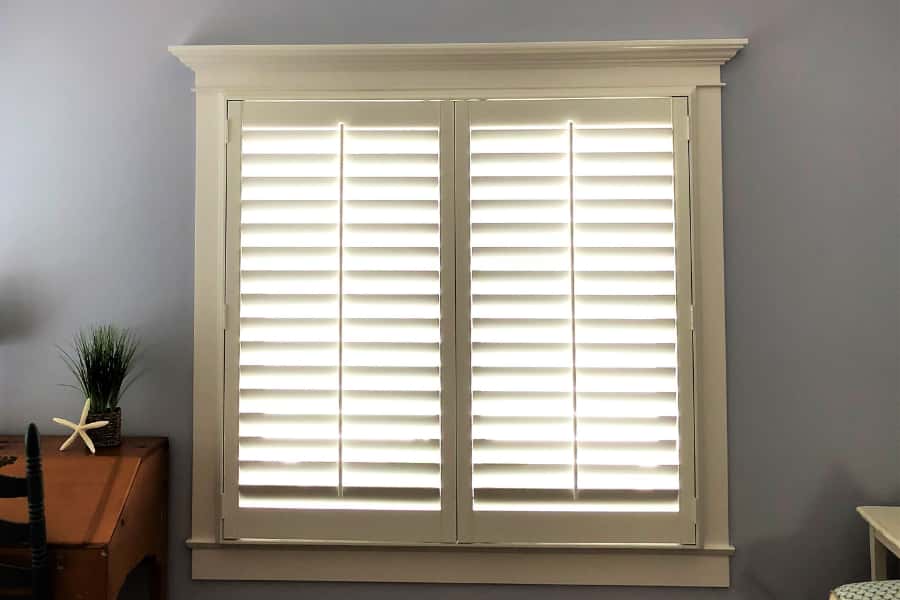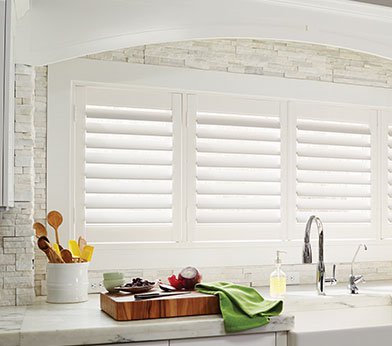What to Take into consideration When Selecting Between Blinds and Shutters for Your Windows: A Comprehensive Analysis of Each Alternative's Benefits
Picking the right window treatment is a choice that goes beyond simple visual appeals; it includes functionality, upkeep, and long-term investment. Blinds offer a versatile and cost-effective solution, while shutters use exceptional toughness and style. Each choice flaunts unique advantages that warrant careful factor to consider, specifically concerning exactly how they line up with your home's layout and your personal preferences for privacy and light control. As we check out the vital differences and advantages of both choices, understanding these aspects will certainly be critical in leading you toward a choice that meets your demands and enhances your space.
Trick Distinctions Between Blinds and Shutters
Often, house owners discover themselves mulling over between shutters and blinds when picking home window therapies. Comprehending the essential distinctions in between these two options can dramatically influence their decision-making procedure.
Blinds are commonly made from products such as timber, artificial wood, light weight aluminum, or vinyl. Blinds are often extra economical, appealing to budget-conscious property owners.
In comparison, shutters are solid home window coverings that can be custom-fitted to the window structure. Shutters supply much better insulation and can enhance the total energy efficiency of a home.

Advantages of Blinds
Blinds provide a useful and versatile service for property owners seeking efficient window therapies. One of the main benefits of blinds is their versatility to different styles and preferences. Offered in many products such as timber, artificial timber, light weight aluminum, and material, they can enhance any interior design scheme. Furthermore, their vast array of colors and textures permits customization to match existing decor.
One more substantial benefit of blinds is their simplicity of operation. Many modern-day blinds included user-friendly devices, including motorized systems and cordless alternatives, making them easily accessible for any ages. This convenience is improved by their ability to give accurate light control, permitting house owners to easily readjust the level of sunshine entering an area.
Blinds also supply outstanding personal privacy choices, as they can be fully opened up, partially tilted, or completely closed, relying on the preferred degree of seclusion. Furthermore, they are normally much more cost-efficient than shutters, offering a budget-friendly option without sacrificing style or capability. Upkeep is simple, as the majority of blinds can be cleaned up with a straightforward wipe-down, guaranteeing that they continue to be an appealing attribute in any home for years to come.
Benefits of Shutters
Shutters present a distinctive set of benefits that make them an appealing option for homeowners seeking trendy and long lasting home window therapies. One of the main advantages of shutters is their remarkable toughness - motorized blinds phoenix. Constructed from durable products such as wood, vinyl, or composite, they are created to withstand the test of time and withstand damages from UV rays, moisture, and temperature changes

Shutters additionally supply boosted personal privacy and light control. House owners can quickly change the slats to attain the wanted level of brightness while keeping privacy from the exterior. Unlike blinds, which might sag or flex with time, shutters maintain their shape and capability.
In addition, shutters can boost the value of a home (shutters phoenix). Their classic visual and toughness attract possible purchasers, making them a worthwhile investment. In recap, the longevity, power efficiency, personal privacy control, and capacity for raised property worth make shutters a compelling option for window therapies
Aesthetic Factors To Consider
When selecting window therapies, aesthetic factors to consider play an essential role in boosting the general layout and atmosphere of a room. Both blinds and shutters offer unique visual qualities that can complement different indoor designs, from contemporary to traditional.
Blinds normally provide a streamlined, minimalist look, easily readily available in a series of shades and products. This versatility permits property owners to coordinate blinds with existing decoration, creating a unified look. Their upright or horizontal slats can include a contemporary side, making them suitable for city setups.
On the other hand, shutters emanate a traditional beauty that boosts rustic and traditional insides. Their solid framework and customizable coatings, such as wood spots or repainted choices, evoke a sense of timelessness. Shutters can work as a statement item, attracting focus to the window while supplying a high end aesthetic.
Eventually, the choice between shutters and blinds should show not just personal design however additionally the desired atmosphere of the room. By very carefully taking into consideration how each option aligns with the total layout vision, home owners can efficiently improve their space's aesthetic allure, ensuring an unified and inviting environment.
Expense and Upkeep Variables
Price and maintenance are critical aspects to consider when selecting between blinds and shutters for window treatments. Blinds are generally extra economical, with a wide array of choices offered at different rate factors.
On the other hand, shutters have a tendency to lug a higher first price due to their customized manufacturing and durable have a peek at this website building and construction. This financial investment may produce long-term cost savings, as shutters are usually much more sturdy and need much less regular substitute. They additionally provide premium insulation, potentially reducing energy costs gradually.
Blinds generally need regular cleaning and occasional washing, while shutters can be wiped down with a wet cloth for cleaning, making them less complicated to preserve. Eventually, the selection in between shutters and blinds ought to balance both preliminary financial investment and continuous maintenance requires to make certain a satisfactory return on financial investment.
Conclusion

Blinds offer a versatile and cost-effective solution, while shutters use unrivaled longevity and read this post here style.Cost and maintenance are important elements to consider when choosing in between blinds and shutters for window treatments. Blinds generally call for regular cleaning and periodic cleaning, while shutters can be cleaned down with a damp towel for cleansing, making them easier to keep. Inevitably, the selection in between shutters and blinds need to stabilize both preliminary financial investment and recurring maintenance needs to make sure an acceptable return on investment.
In recap, the choice between blinds and shutters hinges on different elements, including product structure, design flexibility, and cost.